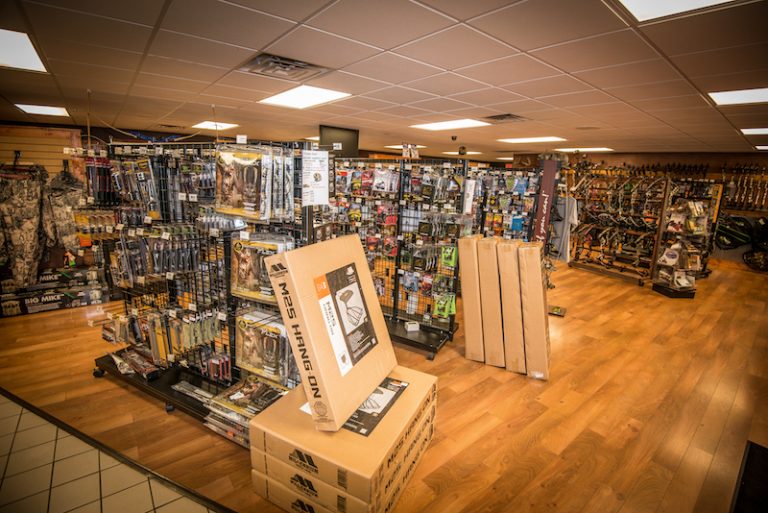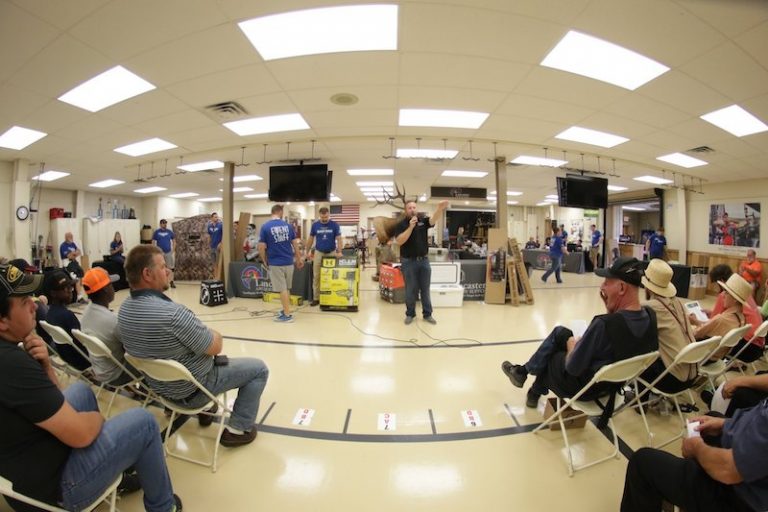Retail
How Archery Shops Can Help Public-Land Bowhunters
Diversify your products and offer hands-on tips to attract and support public-land bowhunters.
Photo Credit: ATA
How many of your customers bowhunt public lands? If it’s less than half, you might not be doing enough to attract public-land hunters.
Private-land hunters typically bowhunt differently than public-land hunters. Those hunting private lands spend summer preparing the property for fall. They plant food plots, monitor trail cameras, and hang or maintain treestands.
Those bowhunting public lands spend summer studying and scouting different lands, and learning area-specific regulations. When the season starts, they often walk miles to hotspots, and continually adapt their strategies to avoid other hunters and find unpressured deer. That mobility often requires different gear, equipment and knowledge than what’s needed on private lands, where hunters often have drive-in access.
According to the U.S. Fish and Wildlife’s 2016 National Survey of Fishing, Hunting and Wildlife-Associated Recreation, 7.3 million (64%) of the nation’s 11.5 million hunters hunt private lands exclusively, 1.5 million (13%) stick to public lands, and 2.4 million (21%) hunt both. That means 3.9 million (34%) of Americans 16 or older hunt public lands.
Meanwhile, the locavore movement encourages people to obtain food locally, including venison from white-tailed deer. That’s why many new or food-conscious bowhunters focus on public lands, which offer free, easy access.
Aaron Warbritton, cofounder of The Hunting Public, hunts public lands up to 95% of the time. He said he struggles to find mobile-friendly gear at retail stores. Many THP followers voice similar concerns.
“That’s not to say they don’t have anything, but most public-land hunters end up buying gear online because the supplies they need often aren’t available [in stores].”
Warbritton cites two reasons for that problem:
1) Mobile-friendly gear is hard for retailers to find and stock.
2) Many retailers think private landowners have more spending money, so they stock and promote items used in permanent setups.
Those points are valid, but becoming obsolete. Manufacturers are making more mobile-friendly gear, and more bowhunters are hunting public lands.
“The next generation of hunters will be forced to hunt more public lands,” Warbritton said. “A lot of new, young hunters are hunting public lands (because) access has been an issue for some time, and now it’s a major issue. Getting permission to hunt (private land) is extremely difficult.”
To compete with online retailers and attract public-land hunters, bowhunting pro shops must diversify their inventory and offer hands-on help and insights.

Make sure you have options for public land hunters in your shop. Photo Credit: ATA
Public-land regulations usually forbid screw-in tree steps, permanent box blinds, and mineral supplements. Diversify your product selections, and stock items public-land hunters need or must use. Think compasses, quality backpacks, public-land maps, GPS software, phone chargers, first-aid kits, repair kits, water bottles, good walking boots, tree saddles, climbing treestands, and lightweight climbing sticks.
Also consider dedicating space in your shop that targets public-land hunters. Create endcaps or window displays that feature new or hot mobile-friendly products. And then promote your offerings on your website and social-media accounts.
Stocking mobile-friendly equipment isn’t enough. It often requires help and training.
“A lot of people want to hunt public lands, but they need to learn how to use that stuff,” Warbritton said. “You can only do so much [training] on YouTube and online. That’s one of the biggest hurdles. People need proper education on how to use this stuff.”
Be willing to teach skills or demonstrate products. Nothing beats hands-on learning for building confidence. Warbritton recalls worrying how to use lock-on stands when younger, and knew only how to use ladder stands. All equipment has a learning curve. Be patient with yourself and others. Contact sales representatives and manufacturers for help and training resources.

Offer to show customers how to use the equipment and explain their benefits. Photo Credit: Lancaster Archery
To help hunters become comfortable with mobile gear or public-land strategies, retailers can ramp up their lessons.
“Archery-shop folks are experts with bows and hunting gear,” Warbritton said. “They just need to get educated on the mobile side of things. If retailers become experts in something, they’ll shorten the learning curve for others tenfold.”
Hold classes or workshops to teach navigating with a map and compass, and invite local experts to present the information. Partner with a conservation warden to teach customers must-know and overlooked public-land regulations. Many wildlife agencies host learn-to-hunt or Field to Fork courses that review these rules. Offer them your expertise.
Consider offering demonstrations on how to use tree saddles or climbing treestands. Ask sales reps to demonstrate their products. Ask them questions you hear from customers. Also set up a tree saddle in your shop so customers can try it when visiting.
You might also offer survival courses. Cover topics like finding food, sourcing water, and building a fire or shelter. That can help newcomers who worry about getting lost, stranded or injured on large public lands.
Questions? Contact Nicole Nash, ATA’s manager of range and retail programs, at nicolenash@archerytrade.org, or (866) 266-2776, ext. 116.

WE ARE HERE TO HELP THE INDUSTRY, TO HELP INDIVIDUAL BUSINESSES GET THE MOST OUT OF THE INDUSTRY, AND TO HELP YOU.